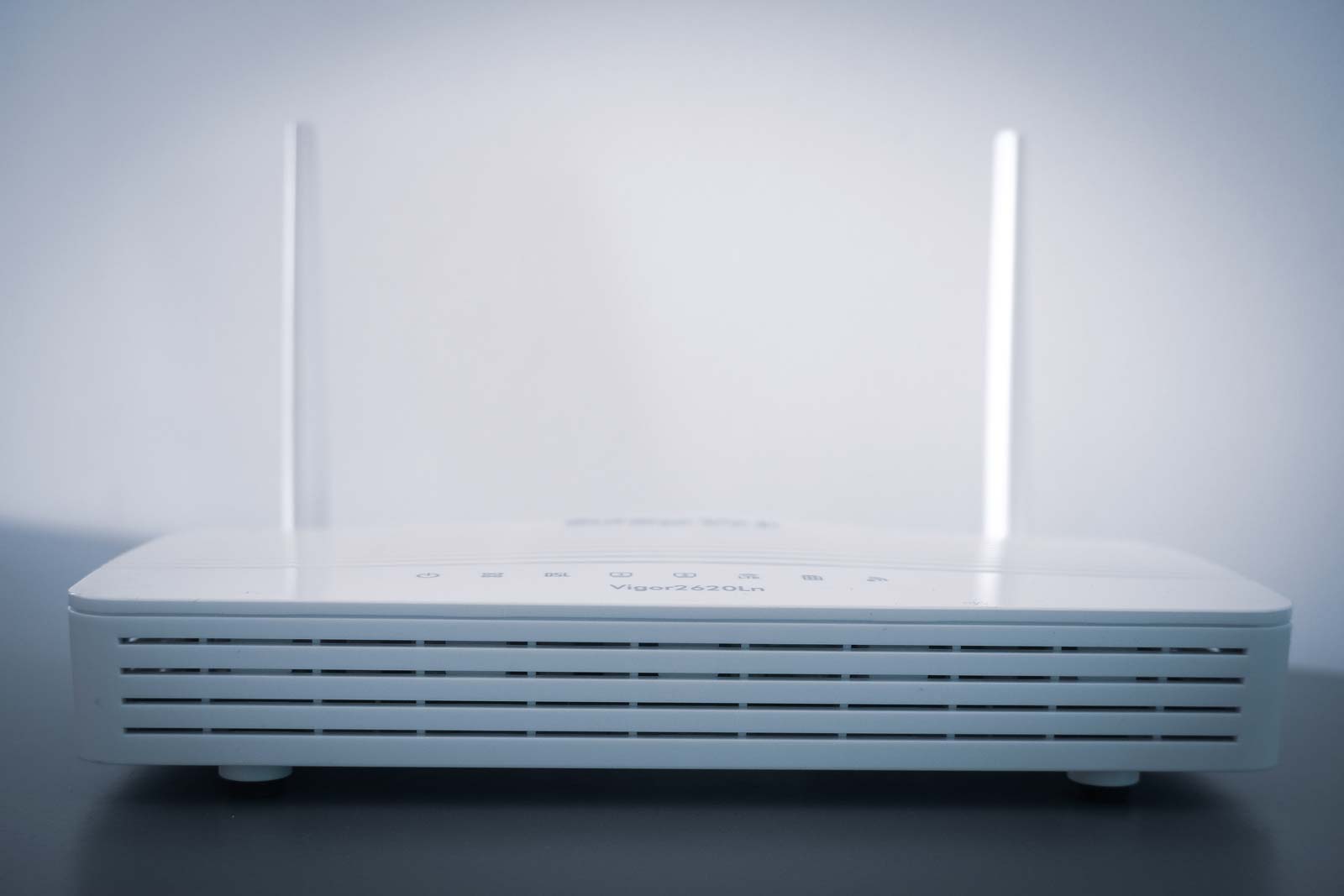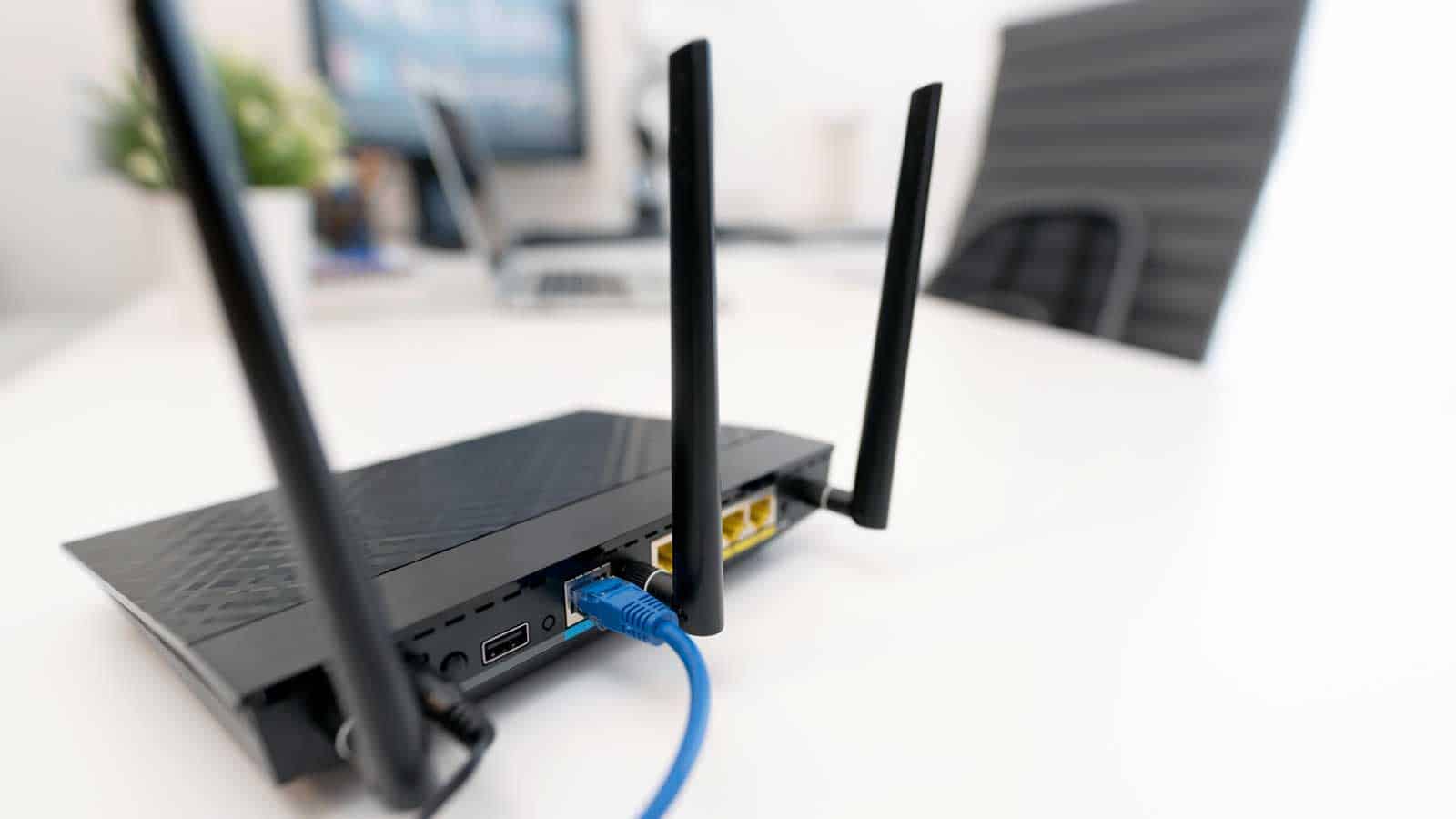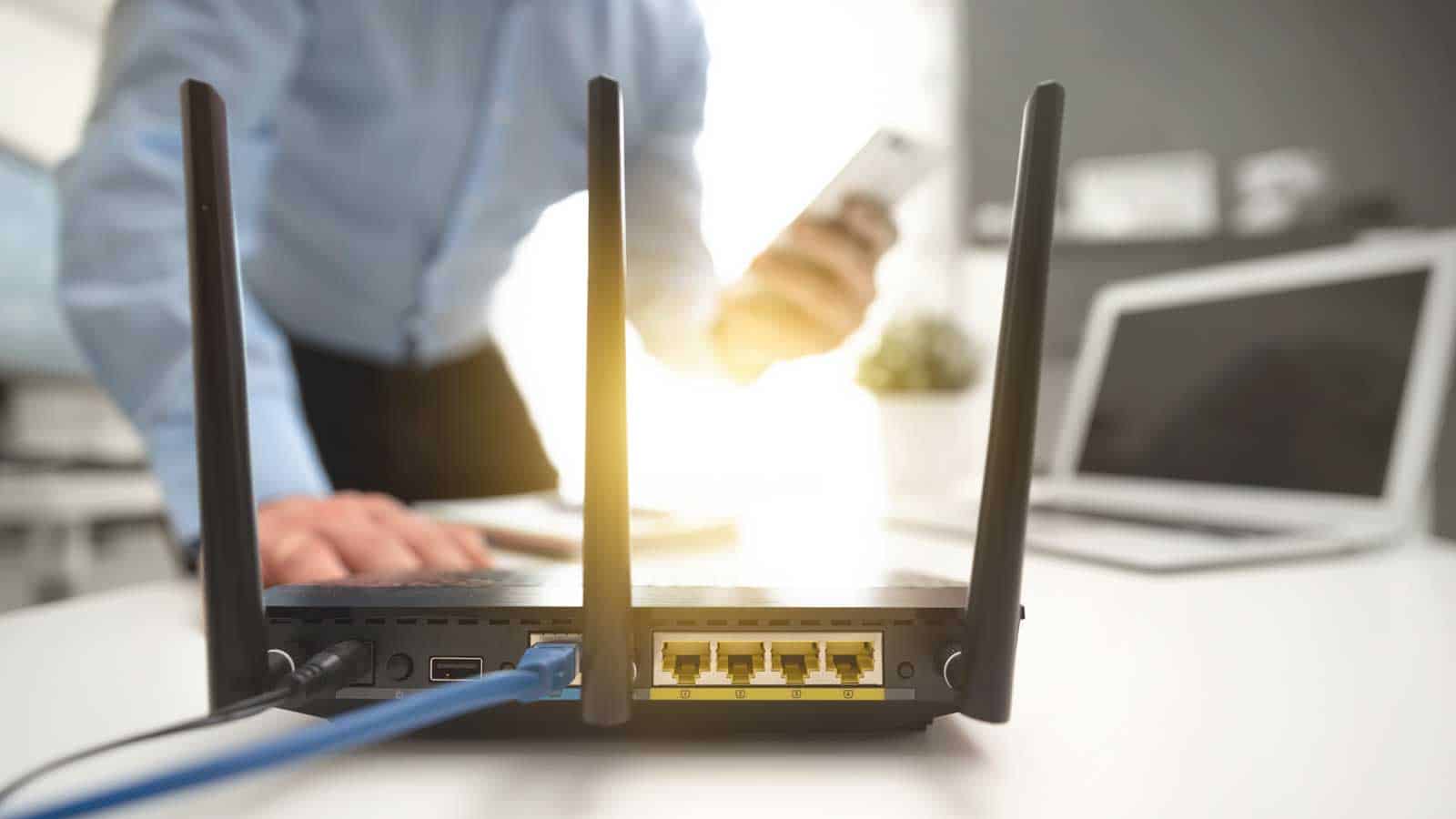Struggling with your WiFi signal strength and wondering if moving it to another room will fix the issue?
Dead zones in WiFi signals are one of the most serious problems we face in today’s constantly connected world.
And if you’re working at home, a high-quality, high-performance internet connection is mission critical: it simply must work.
But what if you could put your home network together so that your router is with you everywhere in your home so you never lose connection?
Is it possible to move your router to another location in your home and boost your signal strength and increase your overall performance?
Yes, you can move your router to another room in your home. When moving your router to another room in your home you need to make sure that the new location is central to the area where you’re going to be accessing it, that it’s elevated in the space and not on the floor, that it’s not receiving interference from other electronic and Bluetooth devices, and that it’s not obstructed by walls, glass, or brick in order to get the best possible signal strength and performance.
Moving your internet router to a new room can be a great way to improve your network’s speed and signal strength. If you’ve been having trouble with your Wi-Fi lately, or if you just want to make sure that your connection is as fast and reliable as possible, moving your router may be the solution you’re looking for.
But what if after moving your router you’re still struggling with a weak signal and poor performance?
What options do you have?
Is there anything you can do when you fee like you’ve hit a dead end?
Yes – and that’s what we’re talking about in this article.
We’re going to cover what you need to do to move your router, how to get the best signal strength and what options you have if you’re still having problems.
Don’t worry – you don’t have to be a tech guru to figure this stuff out – this article was created so that anyone, regardless of tech skill can move their router and get the most out of it.
Real quick, before we get too far into it here, if you want to get more great ideas for your gaming room or home office and want to connect with other home office hackers to make your space the best join my free private Facebook group, Home Office Hacks here.
What Is An Internet Router And What Does It Do

An internet router is a device that connects your modem to the internet. It routes internet traffic between your modem and your computer, and it also handles all of the DNS (Domain Name System) requests. In other words, it’s what makes sure you can surf the web and access all of your favorite websites. without a router, you would be stuck with a modem that can only connect to one computer at a time.
Routers come in all shapes and sizes, but they all have one thing in common: they need to be connected to a modem in order to work. Most routers also have built-in WiFi, which allows you to connect wirelessly to the internet. some routers even have built-in switches, which gives you the ability to connect multiple devices to the internet at the same time.
If you’re looking for an easy way to boost your internet speeds, then a router is definitely the way to go. By routing internet traffic more efficiently, a router can help reduce latency and improve overall performance. So if you’re looking for a way to get the most out of your internet connection, then investing in a good router is a smart move.
Why Might You Want To Move Your Internet Router

There are a number of reasons why you might want to move your Internet router. Maybe your modem is located in a spot that gets poor reception.
Or maybe you want to improve the range of your Wi-Fi network. If your router is in a central location, moving it to the periphery of your home can give you better coverage in that area (but there may be a better solution to that – we’ll talk more about that in a minute).
You might also want to move your router to avoid interference from other devices.
You might be surprised to learn that other electronic devices, especially those using Bluetooth connections can interfere with your WiFi signal causing problems.
In addition, other electronic devices in your home can all compete for bandwidth and slow down your network.
Whatever the reason, there are a few things you should keep in mind when moving your router.
First, make sure that you have a modern wifi router with good signal strength. Technology improves over time so if you’re using an older model , it could be the cause of your problems.
Second, consider the placement of your furniture and appliances. Avoid placing the router behind or underneath these items because they can obstruct your signal and degrade your performance.
How Can You Tell If Your Router Is In The Right Spot
There are a few telltale signs that your router is in the wrong spot.
If you’re router is not in a central location in your home , you may be experiencing spotty coverage.
This means that you have a strong signal in some areas and a weak or nonexistent signal in others.
If your router is behind furniture or appliances, you may be losing valuable performance because the signal has to travel through these objects to reach your devices.
In addition, if your router is located in a room that gets little use, you may not be getting the full potential of your network.
If you’re constantly having to reset your modem or router, that’s a sign that it’s not in the right spot.
Another sign is if your internet is always slow, or keeps cutting out. If you have a good signal but bad internet speeds, that means your modem and router might be too far apart. The ideal distance between them is around 10 feet.
Finally, if you have a lot of dead spots in your house where the wifi doesn’t reach, that means your router isn’t broadcasting its signal properly and needs to be moved. So if you’re experiencing any of these issues, it might be time to move your modem and router to a new location.
Before You Move Your Internet Router To Another Room

Before you move your router, take a few minutes to check your internet speeds in your current location.
This will give you a baseline to work from and help you determine whether or not you’re actually seeing an improvement after you’ve moved your router. Once you’ve done that, it’s time to start planning your move.
Make sure that your equipment is in good working order too.
Older routers may not be capable of providing the same speeds as newer models, so it may be time for an upgrade.
In addition, make sure that you have all the necessary cables and adapters.
In some instances you may need additional coaxial cables and ethernet cables to set up your new WiFi location.
When it comes to coaxial cables new is better. Just because a cable can make a connection, doesn’t mean that you should be using an old cable you had lying around.
Same thing goes for ethernet cables too.
If your internet provider is doing the installation for your service, they’ll virtually always replace your old cables.
New cables ensure that you’re getting the best possible cable connection with cables that are capable at handling the highest speeds possible.
You’ll need to disconnect your modem and router from their current location and reconnect them in their new location.
So you’ll want to make sure that you know where all the cables go and have the right adapters on hand before you start moving things around.
Finally, when scouting for a new location, take a moment to consider your furniture and appliances.
You’ll want to avoid placing your router behind or underneath these items if possible.
They can obstruct your signal and degrade your performance.
With all that in mind, let’s look at a few tips for finding the perfect spot for your router.
Can You Move Your Internet Router To A Different Location In Your House?
If you’re trying to connect a wireless device and you’re struggling with your internet signal, moving it to another room just may do the trick.
But first of all, it’s important to understand how wireless internet works.
Your router broadcasts a signal that your wireless devices, like laptops and smartphones, can connect to. The farther away from the router you are, the weaker the signal will be.
So, if you move your router to a different location in your house, you may be able to get a stronger signal in certain areas.
There are a few things to keep in mind when you’re moving your wireless router.
Here are a few tips to help you get started.
What Are Some Tips For Moving Your Router

If you’re like most people, you may not have put much thought into where you placed your router to begin with.
When your internet service provider installed your service they just used the most convenient location without a lot of thought about how it would actually perform there.
Here are a few tips to keep in mind if you’re thinking of moving your router:
- make sure that your modem and router are in a good spot. They should be placed in a central location and away from any large metal objects.
- try to avoid putting your modem and router in a closed space, like a cabinet or closet. This can impede the signal strength.
- if you have the option, always choose a direct wired connection over wireless. Wired internet connections via ethernet are more reliable and will have higher speeds.
- avoid walls and doors if possible. Thick walls can block signals, and doors can cause interference.
- keep your router away from any devices that emit electromagnetic fields, like microwaves and cordless phones.
- Avoid your kitchen if possible. In your kitchen there are so many electronic devices that can interfere with your signal.
- Make sure that your router is visible. If you have a router with external antennas, make sure that they’re not obstructed by anything.
- Keep your router off the floor. There are too many obstructions on the floor for your internet hub to be down there to get a reliable internet connection. In addition, the dust and debris from the floor can damage your device.
What’s The Best Place To Install Your Router

When it comes to placing your router, there are a few things to keep in mind.
First of all, you want to make sure that your modem and router are in close proximity to each other. This will help to ensure that you get the best possible internet connection.
Additionally, you want to place your router in a central location. This will help to ensure that everyone in your home has access to a strong signal.
Finally, you want to make sure that your router is placed high up off the ground.
In businesses and offices you will usually see wireless access points mounted to ceilings. This is to provide the greatest amount of unobstructed signal possible.
You may not be able to mount your router to your ceiling, but you can try to place it as high up as possible.
This will help to ensure that your signal is not obstructed by furniture or other objects.
When you’re moving your router, keep these tips in mind and you should be able to find the perfect spot for it.
If you have any questions, reach out to your internet service provider. They should be able to help you troubleshoot any problems you may be having.
Does It Matter Where You Put Your Modem?

Most people don’t give much thought to where they put their modem and router. But does it really matter where you place this important piece of equipment?
As it turns out, the answer is yes. Modems and routers work best when they’re placed in a central location.
This allows for the strongest possible signal and the best possible performance.
So if you’re having trouble with your internet connection, it might be worth moving your modem to a different spot in your home.
Of course, there are other factors that can affect your modem’s performance, such as interference from other electronic devices. But if you’re having trouble getting a strong signal, it’s definitely worth trying a new location for your modem. Who knows? You might just find the perfect spot.
Ok – so we’ve covered the tips on how to move it and what to look for.
But what if you move it and you’re still having problems?
What if your WiFi signal just isn’t strong enough?
There are good solutions for that too.
Let’s take a look.
Wireless Access Points
Wireless access points are often used in businesses to extend a network’s capabilities and to provide access to the network wirelessly.
They are connected to the router via an ethernet cord and send out the wireless signals to the rooms that aren’t covered by the router.
If you’re having trouble with your signal strength in your business or office, a wireless access point might be the perfect solution.
Powerline Adapters
A powerline adaptor links your computer to the internet by using the electrical wiring in your home. They’re very easy to set up and they can provide a very strong signal.
Powerline adapters also have the advantage of being able to work even if your WiFi signal is weak or nonexistent.
If you live in an old home with thick walls, a powerline adapter might be the perfect solution for you.
Wireless Range Extenders
Wireless range extenders are devices that extend the reach of your wireless router by boosting the signal standing between the origin and the place you wish to increase wireless coverage. A wireless range extender, like a Wi-Fi repeater, picks up the existing WiFi signal from your network router and rebroadcasts it.
These devices are designed to work with most routers and improve your internet speed. However, there is a limit to how many devices you can use with a range extender. Also, they do not increase the bandwidth you already receive. Connecting too many devices to this device can cause a poor connection.
Mesh Network Systems
Mesh technology is an advanced way to add more wireless coverage to your house, especially if you have large areas to cover.
A mesh network is a collection of devices that are placed strategically throughout your home that act as a single Wi-Fi network. These devices collectively work together to provide all the WiFi coverage throughout your home, instead of relying solely on one device.
This means that you have several sources for WiFi service working seamlessly together with each point serving as an additional access point.
These nodes extend internet connections, transfer data within the network they’ve created, and strengthen the signals across different rooms.
They also come with a mobile app that helps configure the nodes.
After plugging the main router (the one connected to the Internet) into your current router (which is connected to other routers), it receives the signal, allowing you to configure the network, set password, and assign network name. This is the most common method of connecting two or more routers together.
Mesh systems are a little more expensive because of the additional hardware needed to power the network but they’re a great solution for covering larger homes.
Problems With Moving The Router To Another Room

There are a few potential problems that can occur when moving the modem or router to another room.
One is that the modem or router might not work as well in the new location.
Another is that the internet connection could be disrupted if the modem or router is moved too far away from the master socket.
In addition, you could inadvertently create an imbalance in signal strength due to the contruction of your home.
Finally, there’s always the risk of damaging the modem or router when trying to move it to a new location.
How To Reset Your Router If Something Goes Wrong
If you’re like most people, the concept of resetting your router is about as appealing as getting a root canal. But sometimes it’s necessary-if your modem and router have gotten into a tangle, for example, or if you’re troubleshooting a connection issue. So let’s take a look at how to do it.
First, unplug both your modem and router. This means you disconnect it from your cable box, and from the coax cable (if that’s what you’re using). You want everything that’s plugged into it to be disconnected so that it will completely power down.
Wait a minute or two, then plug in just the modem. Once it’s up and running, plug in the router. If everything goes according to plan, you should be back online in no time.
On all routers there is a tiny hard reset button on the back. If everything else has failed, depressing this switch and holding it for 5-10 seconds will perform a factory reset on your router, so you can start again from scratch.
Of course, there’s always the possibility that something will still go wrong. In that case, you may need to call your internet service provider for help. But at least you can take comfort in knowing that you tried everything you could on your own-and that’s always worth something.
Next Steps
Want to connect with other remote workers, contractors, freelancers, gamers and people who work from home who are creating the most amazing home offices and get more tips, tricks and hacks on how to make your home office or gaming room setup the best it can be?
Join my brand new free private Facebook group, Home Office Hacks to connect with other home office hackers to make your space the best!
